Neighbour’s garage SAWN IN HALF, and other property disputes
Surreal real estate spats from around the world
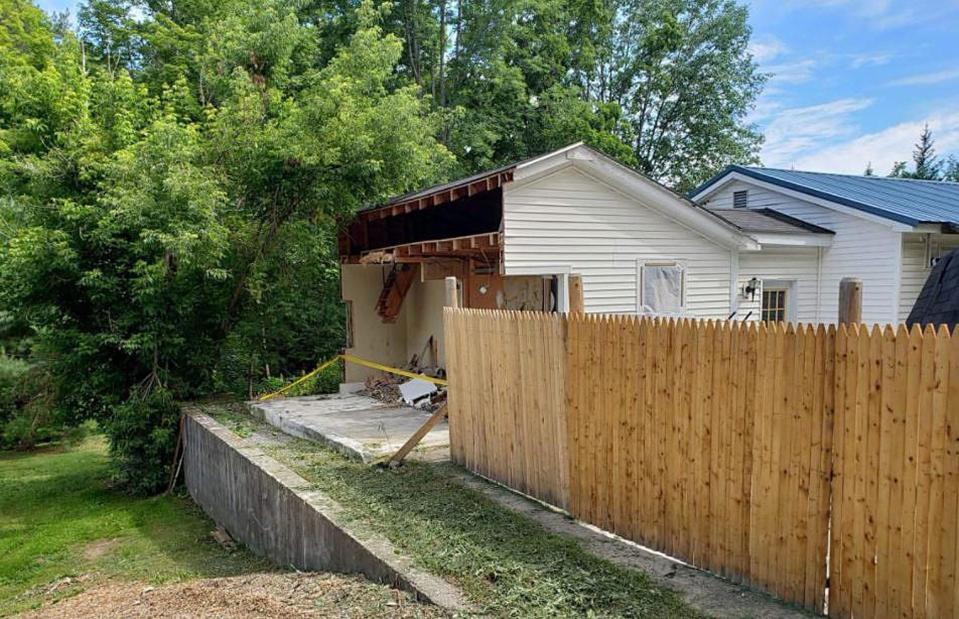
@julie dolan / Facebook
Neighbours don't always get along, but these real estate beefs take pettiness to a whole new level. From outlandish boundary disputes to spite houses and controversial paint jobs designed to rile local residents, you won't believe the lengths some people go to when property is involved. Get ready for a trip down the real estate rabbit hole and click or scroll through to discover the most bizarre property disputes ever.
Neighbours' tree cut in half over bird poo squabble
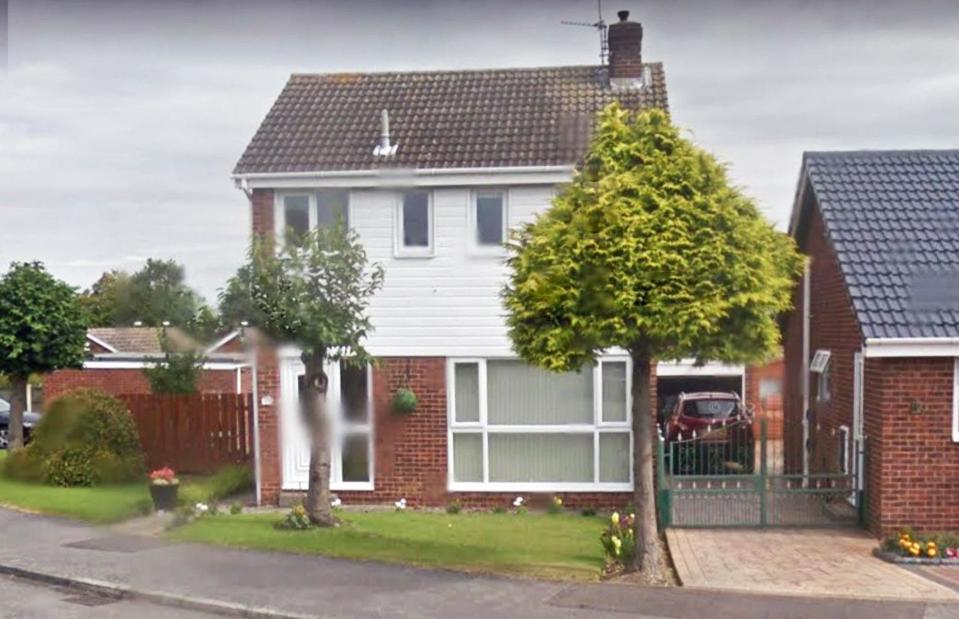
Google Street View
An innocent-looking conifer graced Bharat Mistry's front garden in the leafy Sheffield suburb of Waterthorpe in the UK for almost a quarter of a century with no complaints. But in 2020, Mistry's next-door neighbours started grumbling about birds nesting in the 16-foot tree, which the couple claimed were covering their driveway and car with droppings, and driving them crazy with their cooing.
Neighbours' tree cut in half over bird poo squabble
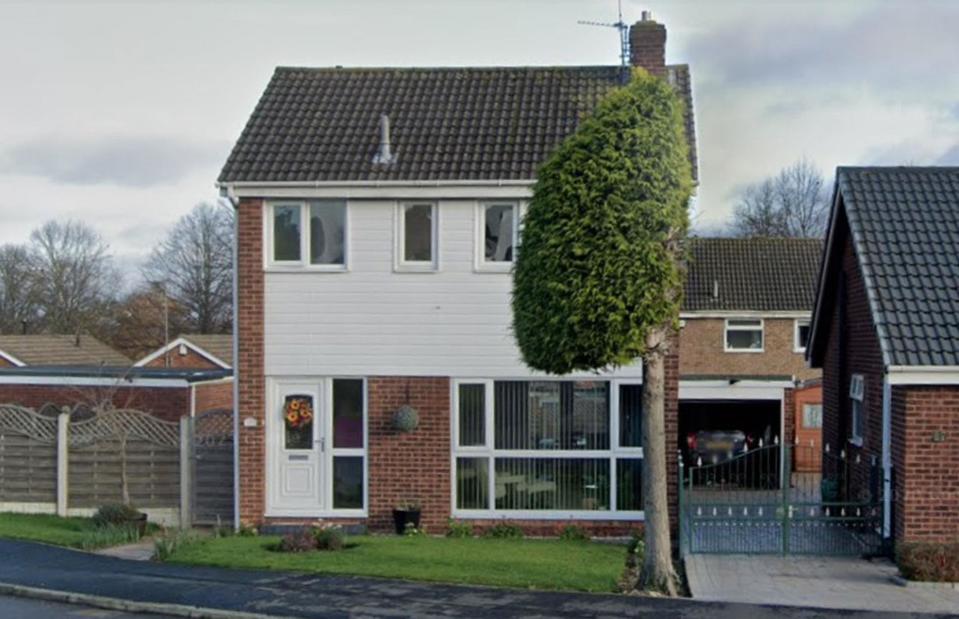
Google Street View
Mistry has said he did his best to placate the pair, having previously pruned the lower branches and trimmed the tree into a ball shape. But his efforts were to no avail, and in the spring of 2021, the couple called in a tree surgeon, who took drastic action by chainsawing the overhanging branches, effectively hacking the tree in half. Mistry and his family were left “gutted” and “absolutely distraught.”
Neighbours' tree cut in half over bird poo squabble

r/CasualUK / Reddit
'Conifergate' ended up going viral after an image of the tree was posted on Reddit, entitled: “Some traditional British pettiness on display". The story gained even more traction after it was featured on Channel 5's Jeremy Vine On 5 TV show in the UK. The odd-looking tree has even become something of a local tourist attraction and put the neighbourhood on the map, according to one resident.
Neighbours' tree cut in half over bird poo squabble

Google Street View
Sadly, harmony hasn't returned to this quiet corner of Sheffield. According to reports from The Sun, the neighbours remain “at war” though they are “polite and pretend not to be,” according to one resident. As for the conifer, it's going strong, though the couple, who “have no regrets about cutting it in half,” are still said to be pruning the branches on their side.
Airbnb host riled neighbours with pink emoji paint job
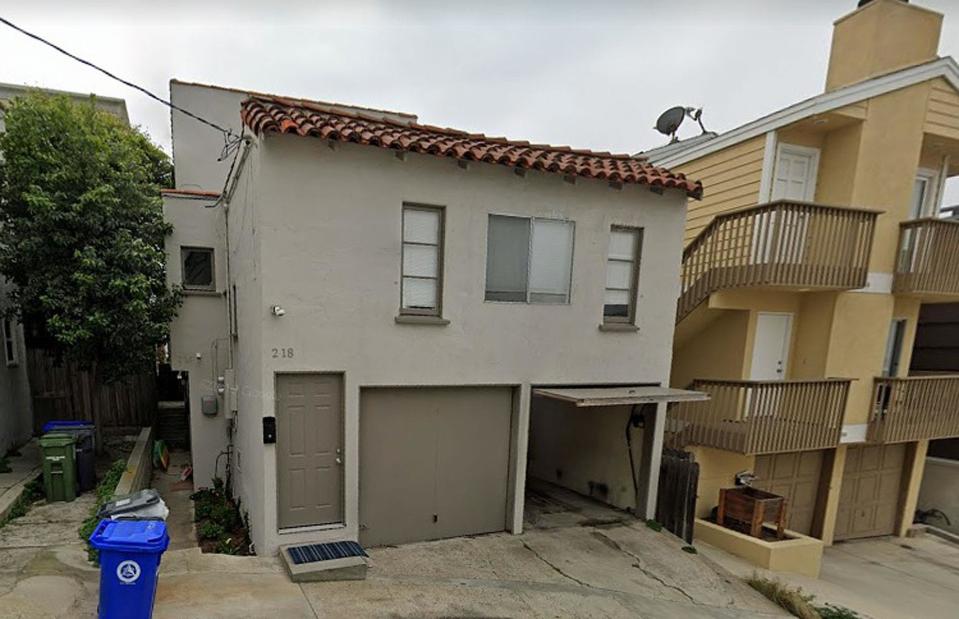
Google Street View
Somewhat unassuming, this boxy beige house in oceanside Manhattan Beach, California, blended in very nicely with the surrounding homes. Until May 2019, that is. Neighbours had reported the owner, Kathryn Kidd, for illegally renting out the property via Airbnb and she ended up being fined £3,200 ($4k) by the city.
Airbnb host riled neighbours with pink emoji paint job

MARK RALSTON / AFP via Getty Images
Not long after, Kidd had the house painted hot pink and plastered the exterior with two emojis, one with a zipped mouth, known to mean 'shut up' in the emoji parlance, and the other with its tongue stuck out. Both surreal faces sported extra-long eyelashes. Susan Wieland, who was among the neighbours that reported Kidd, is sure the eyelashes were a sly dig at her since she'd recently had lash extensions put in. But Kidd denied she was trying to offend anyone, telling Easy Reader News, which first reported the saga, that she commissioned the paint job as a “happy” and “positive" addition to the area.
Airbnb host riled neighbours with pink emoji paint job

MARK RALSTON / AFP via Getty Images
The neighbours were anything but happy and positive though, calling the paint job “graffiti” and an “attack on the neighbourhood.” Horrified by what they viewed as an eyesore that would drag down house prices in the street, homeowners complained en masse at a city council meeting in August 2019.
Airbnb host riled neighbours with pink emoji paint job

Google Street View
Not long after, however, Kidd put the property on the market and it eventually sold in March 2020 for just under £1.3 million ($1.6m), which while below the asking price, was £164,000 ($200k) more than what Kidd paid for it in 2018. Much to the relief of the locale, the house then reverted to its neutral hue, effectively ending the drama.
Woman gave house 'circus' makeover after planning complaints
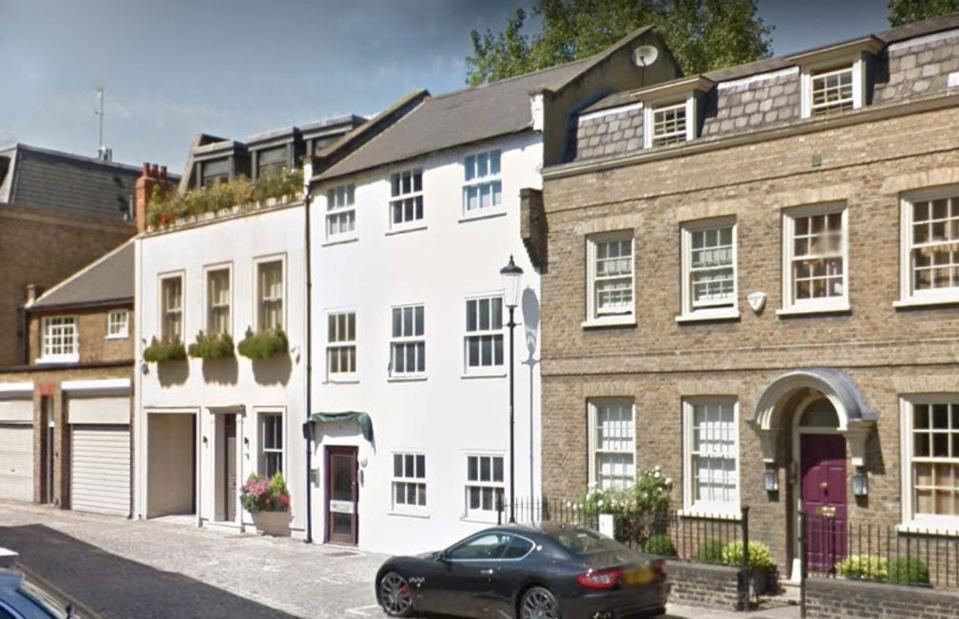
Google Street View
In 2012, real estate developer Zipporah Lisle-Mainwaring splurged £15 million ($18.2m) on this white, three-storey mews property in London's upmarket Kensington, with the hope of replacing it with a luxe two-storey home boasting a super-double basement and swimming pool. But when neighbours got wind of the project, they lodged an objection with the local council, and the plans were rejected.
Woman gave house 'circus' makeover after planning complaints
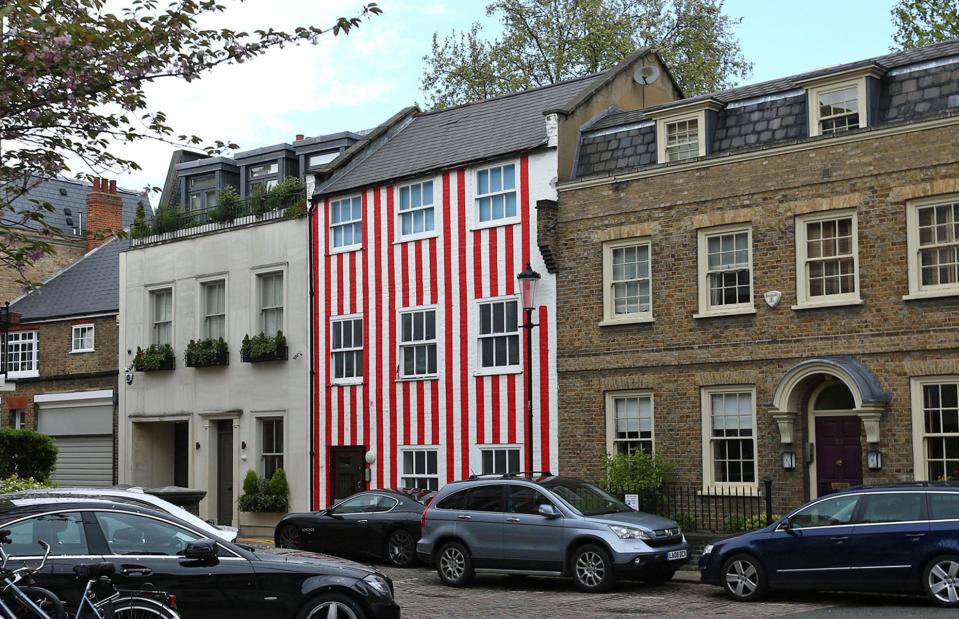
Carl Court / Getty Images
Lisle-Mainwaring promptly had the townhouse painted in red-and-white stripes in March 2015. The neighbours were up in arms, aghast at the garish makeover, while the property developer denied she did it out of “spite”, saying that her desire was to “add to the gaiety of the nation.”
Woman gave house 'circus' makeover after planning complaints

Carl Court / Getty Images
The paint job certainly had the desired effect of riling local residents if that were its true intention. Claiming to be “horrendously unhappy” with it, Lisle-Mainwaring's neighbours slammed the “hideous and tacky” revamp for looking like “a cross between a beach hut and a circus”, labelling it an “absolute monstrosity” in an interview with MyLondon.
Woman gave house 'circus' makeover after planning complaints
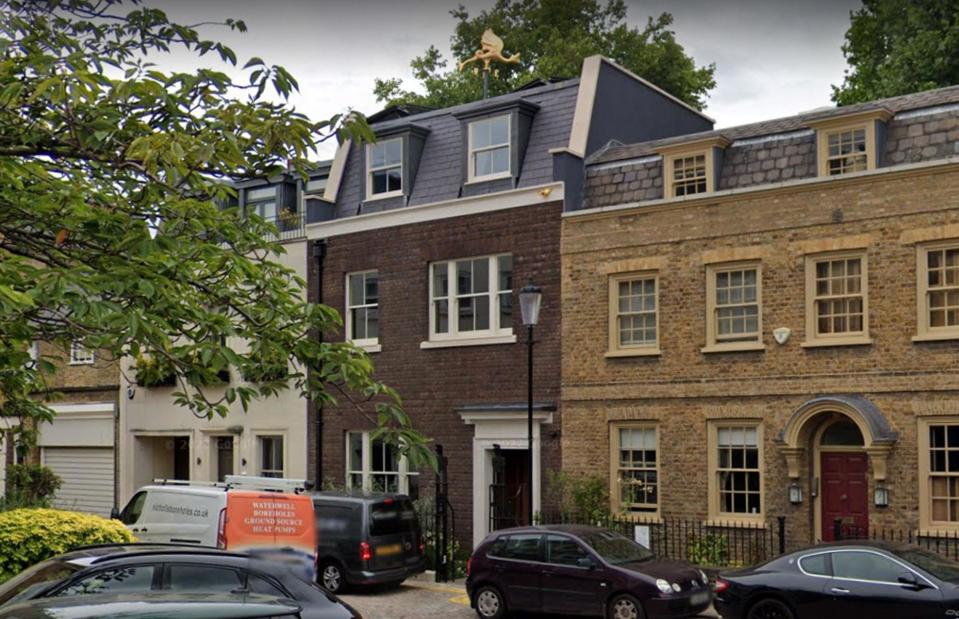
Google Street View
The local council then intervened, ordering Lisle-Mainwaring to repaint the façade white, but she fought back to keep the stripes, taking the battle all the way to the UK High Court. In 2017, the court ruled in her favour and she was also finally granted permission to redevelop the townhouse, which lost the stripes at long last when it was demolished and replaced in 2019. The victory came at a heavy cost, however: Lisle-Mainwaring later said she racked up £1 million ($1.2m) in legal costs to get her own way.
Civil War veteran built skinny house to spite his brother
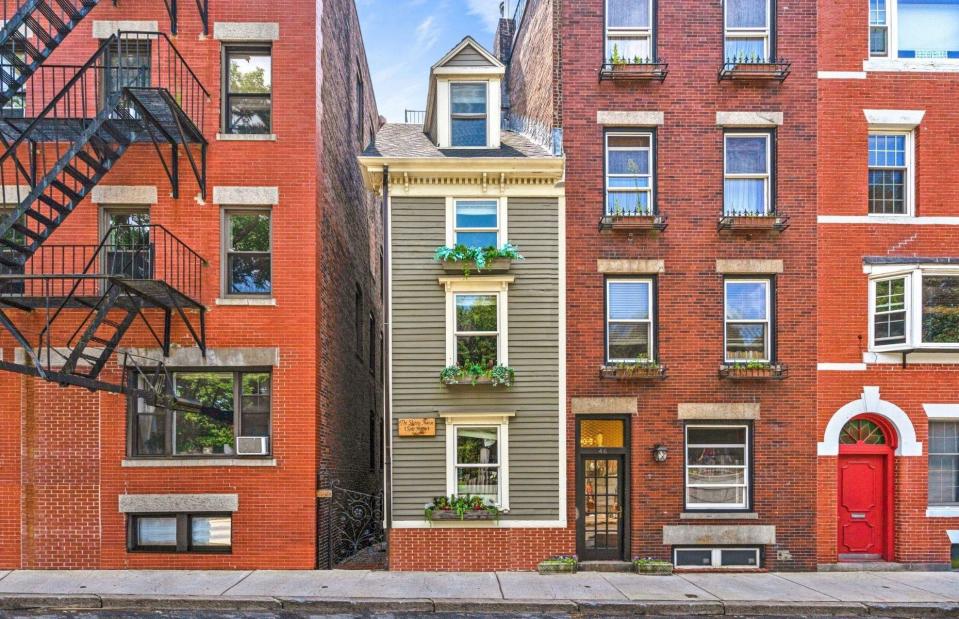
CL Properties
A spite house is a home built specifically to annoy a neighbour or erected as a vengeful act against another landowner. Believe it or not, there are plenty dotted around the world. Among the most infamous is 'Boston's Skinny House', which at just 10 feet wide, is the narrowest home in Beantown, which itself is noted for its extra-slim townhouses.
Civil War veteran built skinny house to spite his brother

CL Properties
Local legend has it that the 1,165-square-foot property in the city's historic North End was built shortly after the American Civil War by a returning soldier. He reportedly discovered to his horror that his brother had constructed a large home, hogging land they'd both inherited from their father. To spite his sibling, the war vet built the skinny house on the slither of land that remained, obscuring his brother's view and blocking out sunlight.
Civil War veteran built skinny house to spite his brother
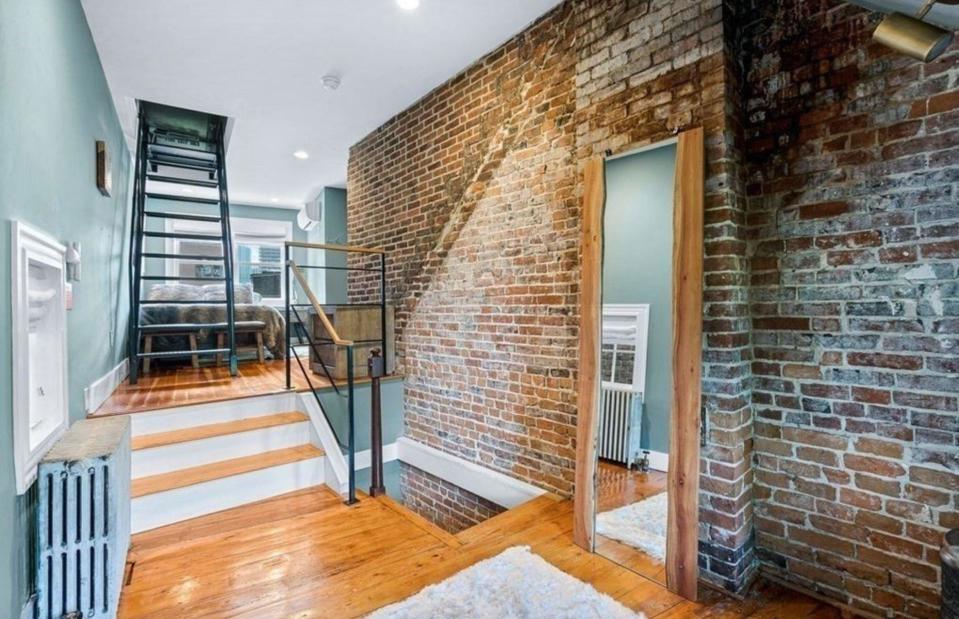
CL Properties
Another story claims the property was built by an unnamed individual to shut out light and air from the home of a neighbour they were in a bitter dispute with. A plaque on the front puts the construction date at 1862, but official records peg it at 1890, so it's anyone's guess which is correct. Whatever its real beginnings, the house has certainly fascinated Bostonians over the years and attracts tourists in their droves.
Civil War veteran built skinny house to spite his brother
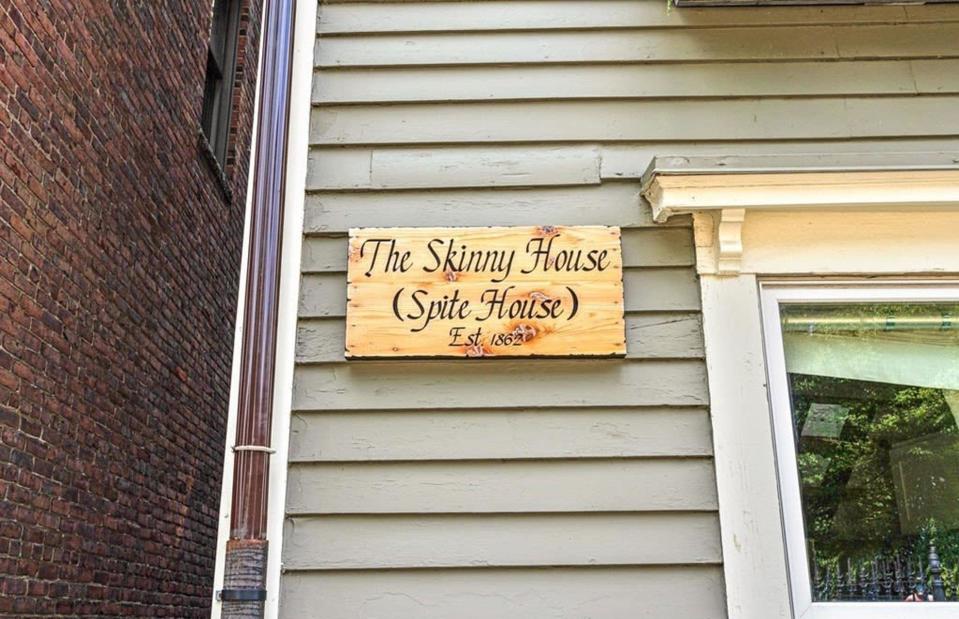
CL Properties
The two-bedroom home's diminutive size is hardly a stellar selling point. Yet the property's unique charm ensured it had no shortage of potential buyers when it last came on the market in 2021 with CL Properties. The home swiftly sold for just over £1 million ($1.2m), £41,000 ($50k) above the asking price.
'Montlake Spite House' built to ruin neighbour's view?

Compass
This curious wedge-shaped home in the affluent Seattle suburb of Montlake is just 55 inches wide at its narrowest point and 15 feet wide at its thickest. How the petite 862-square-foot property came to have such kooky pie-like dimensions is alluded to in the name locals have coined for it: the Montlake Spite House. But there are two versions of its origin story, as recounted by Curbed.
'Montlake Spite House' built to ruin neighbour's view?

Compass
The first theory posits that the Hobbit-worthy house, which was built in 1925, came about as a consequence of an acrimonious divorce. As the tale goes, the husband got the two-bedroom, two-bathroom home, while the wife was left with a modest wedge of land, so she opted to build an unusual, compact house that would fit snugly into the paltry plot.
'Montlake Spite House' built to ruin neighbour's view?

Compass
The other story maintains that the original owner built the house with the malicious intention of blocking the view of a neighbour who had made an offensively low offer for the plot. But while the Spanish Revival property appears to have been built out of spite, whatever the real origin story, it certainly isn't ugly.
'Montlake Spite House' built to ruin neighbour's view?
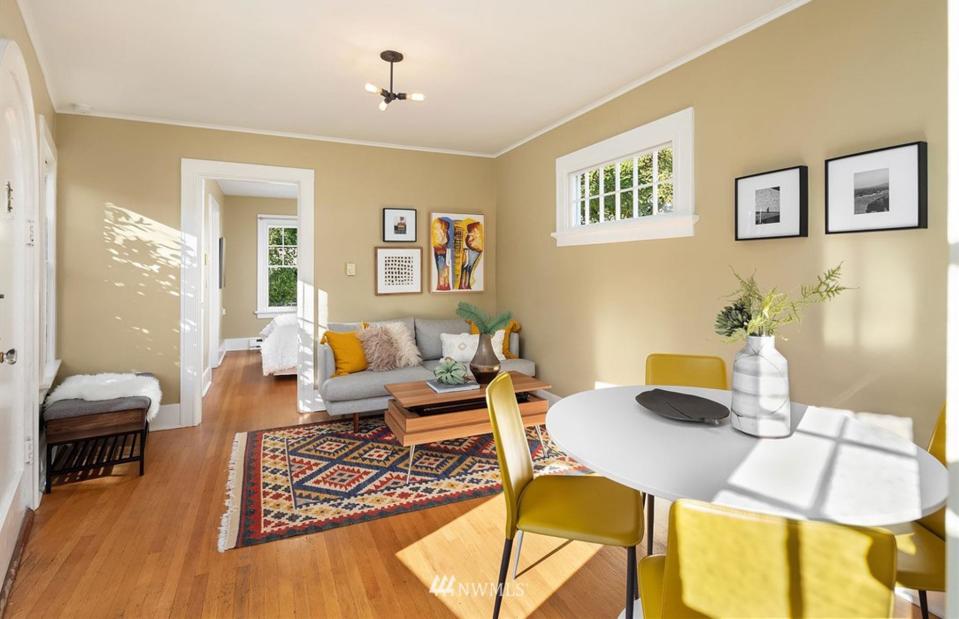
Compass
In fact, the dinky property was quite rightfully described as “a charmer” by a realtor in a past sales listing. The tiny house was snapped up super-fast when it last went on the market in April 2019, selling through Compass for a not-so-tiny £505,000 ($615k), which is considerably above the average sale price for a property of this size in the neighbourhood.
Vegan sued neighbours over barbecue smells

9News
Throwing snags and shrimps on the barbie is a sacred Aussie tradition, so you can imagine the furore that erupted when diehard vegan Cilla Carden took her neighbours in the Perth suburb of Girrawheen to court over their barbecues. She said the smells of meat and fish on the grill were wafting over the fence and into her garden, destroying her quality of life.
Vegan sued neighbours over barbecue smells
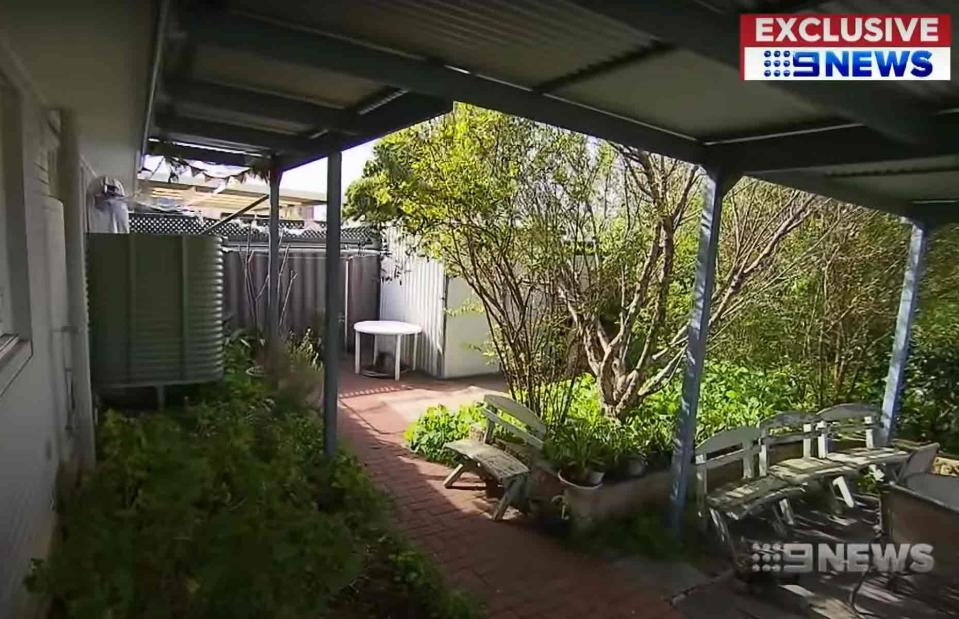
9News
Carden initially complained to the authorities in August 2017 and set out her beef in front of a tribunal. As well as her issue with the meaty barbecue smells, the massage therapist presented a litany of other grievances, ranging from neighbours' cigarette smoke to the noise of their kids playing.
Vegan sued neighbours over barbecue smells

Adwo / Shutterstock
One neighbour told 9News he'd removed his barbecue and stopped his children playing basketball but Carden refused to back down. After the tribunal rejected every single one of her complaints, she took her case to Western Australia's Supreme Court. But the judge sided with the neighbours and the case was thrown out in August 2019.
Vegan sued neighbours over barbecue smells

@warriorforanimals / Facebook
By this point, things had turned nasty. Carden was subjected to a barrage of online hate, while a farming activist called Bailey Mason attempted to organise an intimidating community barbecue protest outside Carden's home, posting an invite on Facebook. Thousands were due to attend the event scheduled for 19 October 2019, but days before it was going to take place, Mason cancelled the protest and told his followers he didn't condone the harassment of Carden, who had vowed to fight on, despite the haters.
Garage sawn in half amid boundary dispute
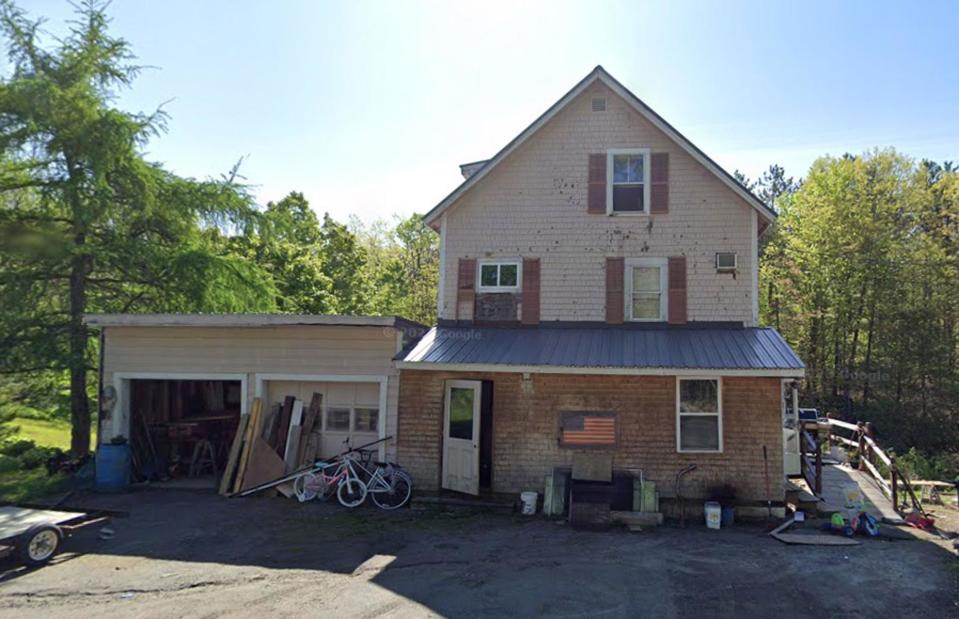
Google Street View
In 2012, construction worker Gabriel Brawn and his family moved back to his hometown of Doxer-Foxcroft in Maine and into the clapboard house where he grew up. According to the Bangor Daily News, relations with the sole neighbour, Steve Ritter, were cordial by all accounts. But following Ritter's death in 2016, his widow, Theresa Laythe-Ritter, and son, Blake Ritter, took ownership of the home, at which point the situation allegedly descended into “chaos and craziness."
Garage sawn in half amid boundary dispute

Google Street View
Relations between the neighbours became strained and the Ritters began renting the house out. Tensions came to a head in April 2020, when the Brawns reportedly had a showdown with Blake Ritter over the dividing line between the two properties. This led the Brawns to call in a surveyor, who determined half of the Ritters' garage and part of the driveway were encroaching on his land. The findings were then confirmed by a second surveyor.
Garage sawn in half amid boundary dispute
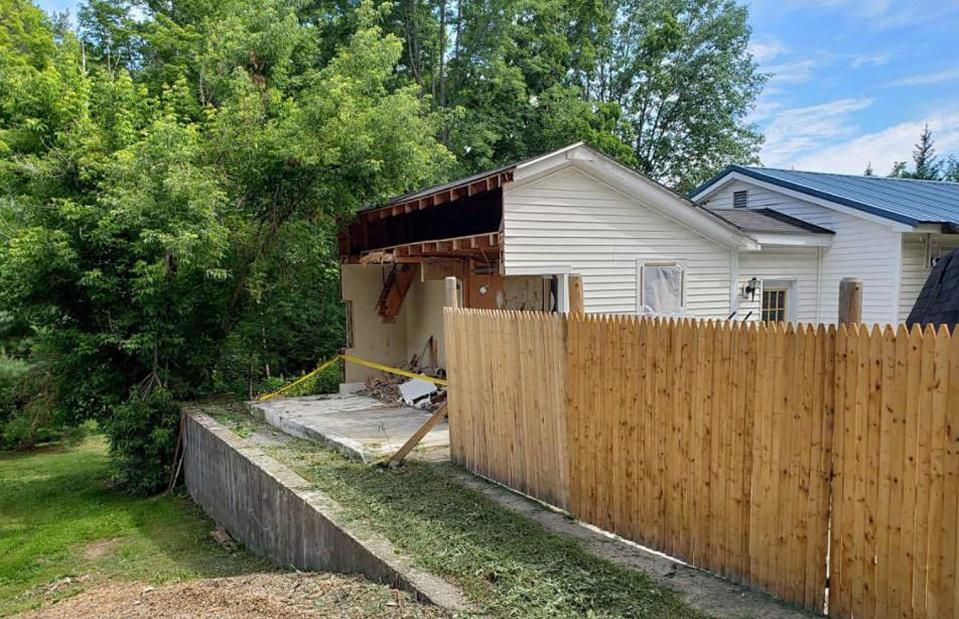
@julie dolan / Facebook
Blake Ritter was seemingly ready to accept defeat, and on Memorial Day 2020, he reportedly asked to retrieve his father's ashes from the garage. Instead, at least according to the Brawns, he had a meltdown and started trashing the property and littering their yard. Enraged, Gabriel Brawn decided to take drastic action and the following day, 26 May, he grabbed his Sawzall, a type of heavy-duty, machine-powered saw, and precision-cut the garage in half.
Garage sawn in half amid boundary dispute

@gabriel brawn / Facebook
The Ritters have since filed a lawsuit against Gabriel Brawn, and though it doesn't appear to have gone to court yet, the presiding judge has requested Brawn set aside £123,000k ($150k) for damages. Showing there are always two sides to every story, the suit characterises Brawn as a “bully”. Brawn, who has said he would have liked “to have seen a better resolution”, could end up with a hefty bill to pay.
Neighbour filed noise complaint over rowdy sea lions

frantic00 / Shutterstock
When it comes to noise complaints, typical gripes tend to involve neighbours' raucous late-night parties, construction work, alarms randomly going off; that sort of thing. And when animals are concerned, decibel-related grievances are almost always related to dogs barking incessantly. But it was a different story in 2018 for a woman living next to Cologne Zoo.
Neighbour filed noise complaint over rowdy sea lions

dpa picture alliance / Alamy
As you can see, homes are located remarkably close to the enclosure housing the zoo's Californian sea lions, so the noise complaint is hardly surprising given these animals can out-bark and drown out the happiest of canines. Plus, they roar like actual lions to boot. The resident complained her sleep was being disturbed by the five animals who go by the names Astrid, Amelie, Lina, Mia and Oz.
Neighbour filed noise complaint over rowdy sea lions

JohnPj / Shutterstock
Cologne's District Government then launched an investigation and the sea lions' nocturnal cries were recorded at 54 decibels, which is 10 decibels above the acceptable limit. Keen to resolve the only noise complaint in its 168-year history, Cologne Zoo figured out the animals' vocalisations were being amplified by the caves they retired to after dark.
Neighbour filed noise complaint over rowdy sea lions

Jörg Schüler / Getty Images
The zoo closed off two of the three caves, and as luck would have it, this sorted out the noise issue. According to German news outlet Welt, the Cologne District Government confirmed the “slight noise disturbance” was “probably over” after speaking to the resident in April 2018, adding that there would be “no further" measures taken.
Disgruntled man listed part of homeowner's wall for £40k

Keller Williams Capital Properties
For the past few months, house hunters in Washington, DC have been thinking they've found the bargain of a century – a property in mega-expensive Georgetown for only £40,000 ($49k) – only to discover after reading the listing posted by Keller Williams that the piece of real estate in question is a dilapidated wall, and only part of it at that. The Washington Post got to the root of the story in late July.
Disgruntled man listed part of homeowner's wall for £40k
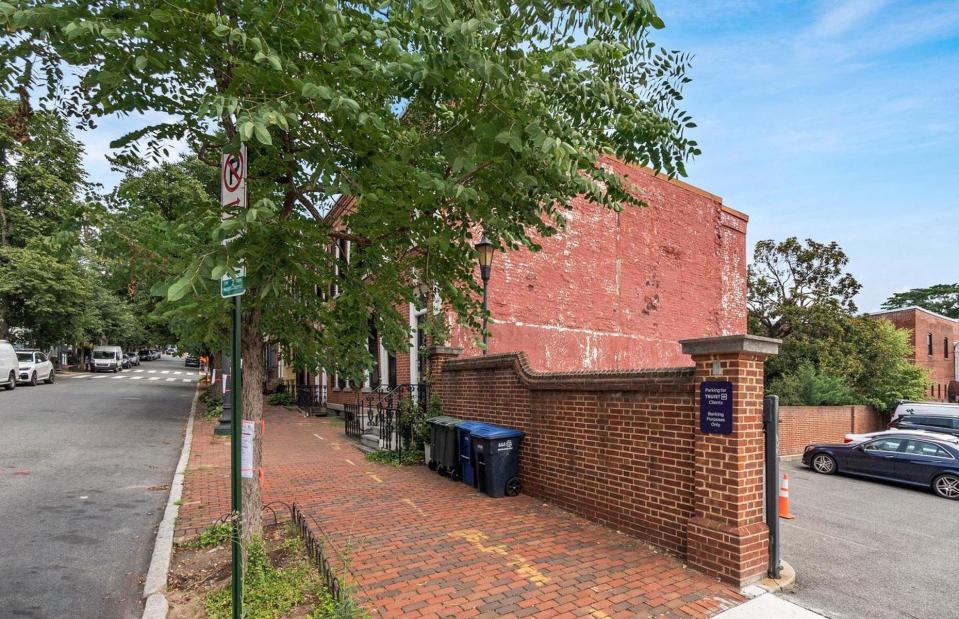
Keller Williams Capital Properties
The wall stands on a skinny piece of land between a car park and a historic rowhouse. Its owner, Allan Berger, inherited the plot on which it stands from his father, who he says bought it at an auction in the 1970s as a sort of joke so he could tell people he owned property in upscale Georgetown. However, conflicting origin stories exist. According to the Georgetown Metropolitan blog, Berger's father actually acquired it in 1992 from a woman who specialised in buying up unusual lots.
Disgruntled man listed part of homeowner's wall for £40k

Keller Williams Capital Properties
It's thought that the wall may have been part of a long-demolished hotel and survived as it supports the rowhouse next door. Trouble began in 2020, when the home's owner, the fittingly named Daniela Walls, noticed water leaking into her home, which an engineer deduced was coming through the external wall. At its widest point, Walls owns the inner 12 inches, while the outer 12 inches belong to Berger.
Disgruntled man listed part of homeowner's wall for £40k

Keller Williams Capital Properties
In a bid to get Berger to fix and maintain the crumbling wall, Walls went to the authorities and Berger was fined £1,360 ($1.7k) last November for improper upkeep. She later offered to buy the wall for its tax-assessed value of £493 ($600). Affronted by the fines and what he saw as an insultingly low offer, Berger then plumped to sell the wall for the massively overinflated figure of £41,000 ($50k), which he admits to having picked off the top of his head. Astonishingly, several people have expressed an interest in buying it despite the ridiculous price, but nobody has taken the plunge as yet. The price was modestly reduced to £40,000 ($49k) in October.
Homeowner built fence through neighbour's swimming pool
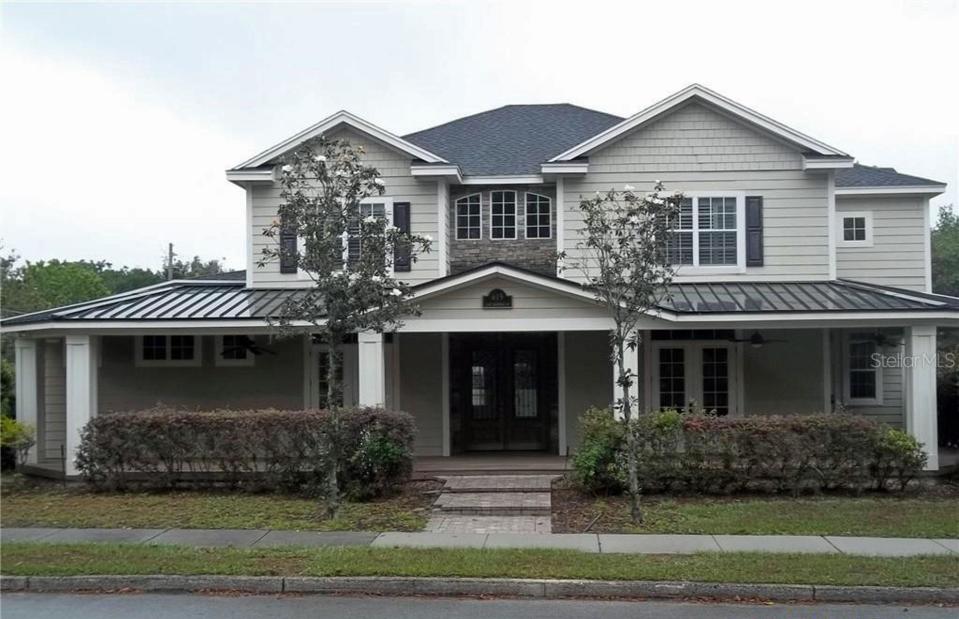
Compass
Built in 2006, this four-bedroom, five-bathroom home in Orlando, or more accurately, its yard, was the centre of a “Goliath vs Goliath” battle during the late 2010s. According to the Orlando Sentinel, the house sits on a triple lot. A previous owner sowed the seeds for the future real estate feud by taking out two mortgages from two different banks for the three parcels. When the market crashed in 2008, both loans were foreclosed. Then, in 2016, business mogul Craig Mateer snapped up one of the empty lots for £82,000 ($100k) via his RMS Investments firm.
Homeowner built fence through neighbour's swimming pool
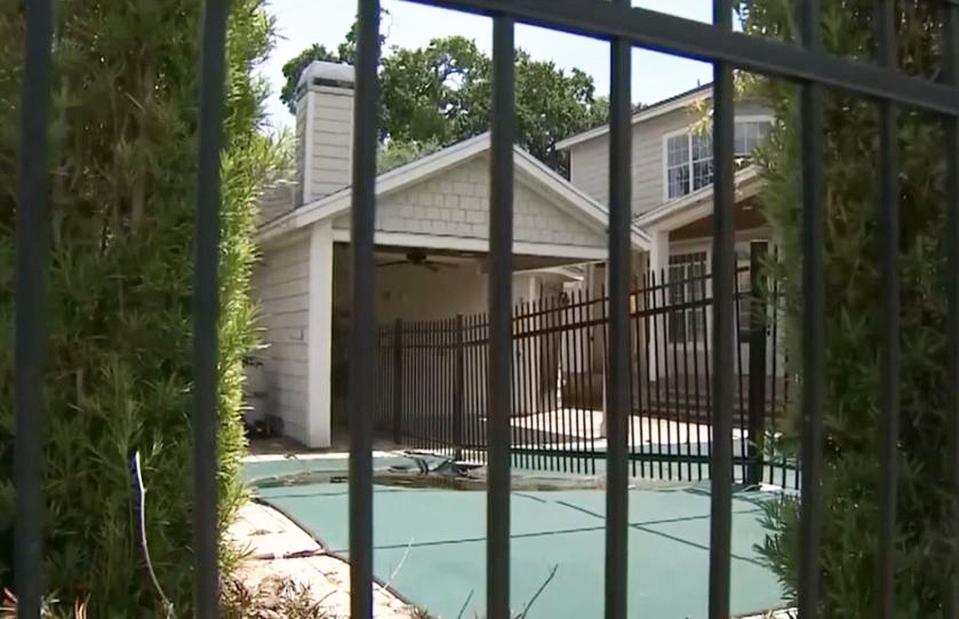
WFTV Channel 9 / YouTube
Mateer wanted to build a home on the vacant lot but was unable to do so given parts of the garage and pool were situated in one of the other lots owned by Deutsche Bank, which included the site's existing house. A fence was erected bisecting the garage and pool to mark out who owned what, angering local residents no-end, who were already furious that the house had been left empty for years and was attracting squatters.
Homeowner built fence through neighbour's swimming pool

WFTV Channel 9 / YouTube
You can see exactly where the fence falls over the pool cover in this snapshot from coverage by WFTV Channel 9. Mateer's offer to purchase the house was turned down and the two parties reached an impasse. Due to the boundary dispute, Deutsche Bank was unable to sell the home, while Mateer couldn't build on his plot. With both sides unwilling to compromise, the feud culminated in a showdown at Orlando City Hall in 2020.
Homeowner built fence through neighbour's swimming pool
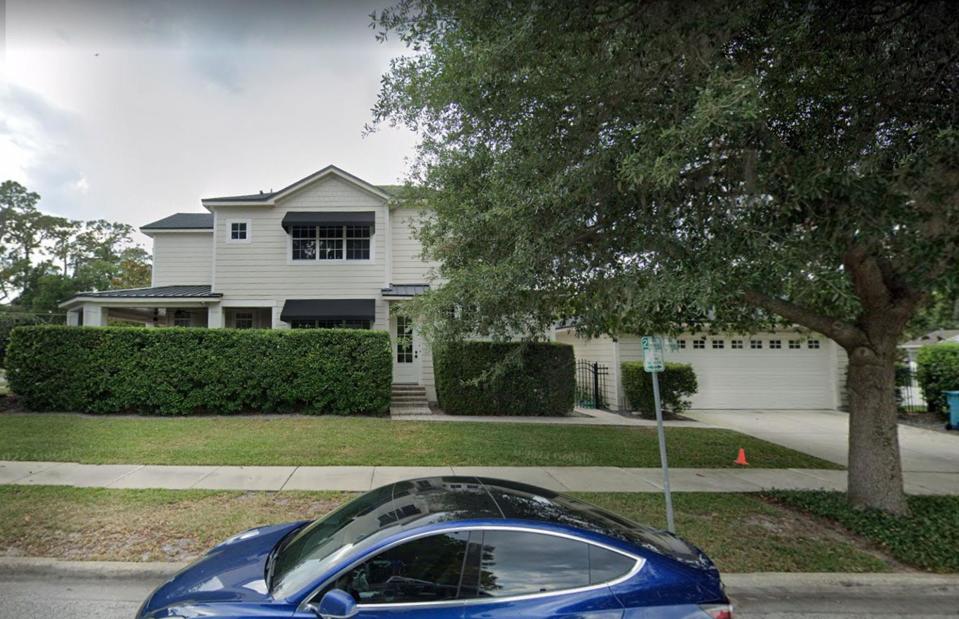
Google Street View
Mateer proposed to sell off the sliver of his land that included part of the garage and pool. Orlando City Council agreed this was the best solution and gave him the green light. The house sold later in 2020 for £287,000 ($350k) and looks to have had a makeover. Best of all, the weird fence cutting through the yard has been removed, though there haven't been any signs of building work on Mateer's plot.
'Castle of Spite' built for duchess embroiled in family feud

Strutt & Parker
Dubbed the 'Castle of Spite', this beautiful property in Sutherland came about as the result of an ugly dispute between the original owner and her late husband's family. Not long after his wife's death in 1888, George Sutherland-Leveson-Gower, the third Duke of Sutherland, tied the knot with his mistress, an army widow called Mary Caroline Blair, much to the consternation of his children.
'Castle of Spite' built for duchess embroiled in family feud
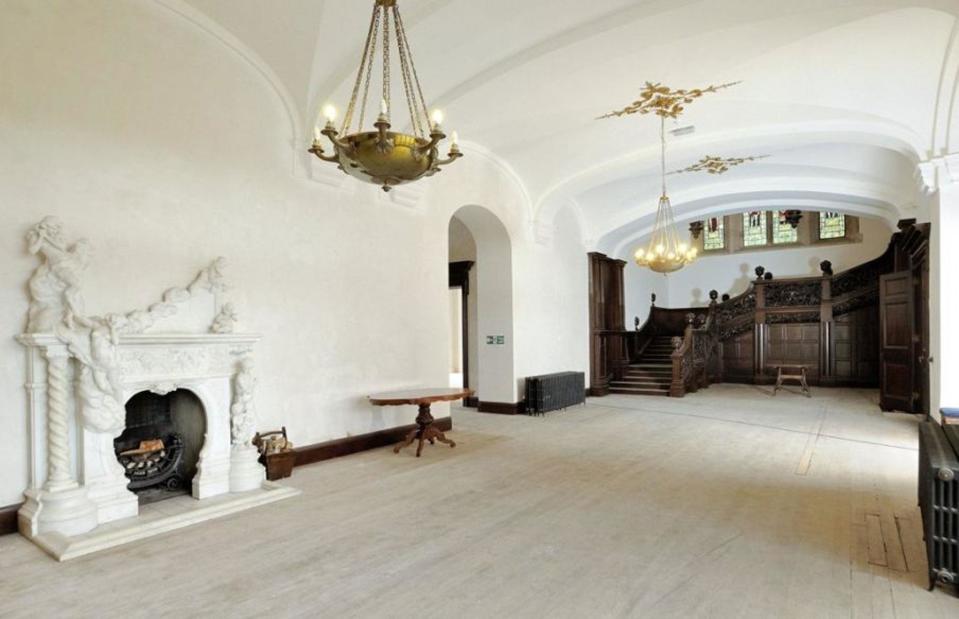
Strutt & Parker
Duchess Blair, as she was nicknamed, was shunned by high society but the real mud-slinging began when the Duke died in 1892. A month before he passed, the wealthy aristocrat, who was among the richest people in the UK, hastily drew up a will leaving everything to his wife. Unsurprisingly, the will was vehemently contested by the late Duke's children. The furore reached fever pitch when, during a meeting with lawyers, the Duchess allegedly tossed one of the documents pertaining to the case in the fire and was jailed for six weeks as a consequence.
'Castle of Spite' built for duchess embroiled in family feud
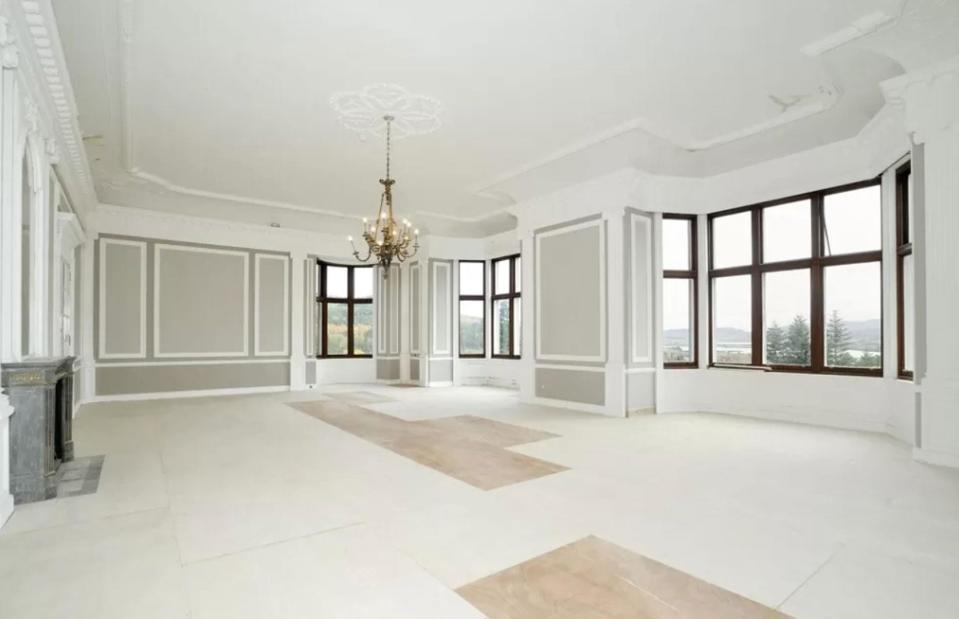
Strutt & Parker
The press branded the Duchess "the wicked stepmother," which later provided inspiration for the Disney Cinderella character. Considered the scandal of the year, the dispute reportedly made headlines around the world. In 1894, the Duchess eventually agreed to a settlement with the late Duke's kids, giving up her claim on the entire fortune in exchange for half a million pounds and a “suitable accommodation.” In 1905, construction work began on Carbisdale Castle, just outside the boundary of the deceased Duke's Sutherland Estate.
'Castle of Spite' built for duchess embroiled in family feud

Strutt & Parker
The castle's clock tower famously has just three faces: the side facing the Sutherland Estate is blank supposedly because the Duchess didn't want to give her late husband's family the time of day. The Duchess died in 1912 and the castle, which is reputed to be haunted by a ghost named Betty, went on to be a sanctuary for the Norwegian royal family during the Second World War and served as a youth hostel for 60 years. Its current owner, barrister Samantha Kane, who styles herself Lady Carbisdale, bought the 19-bedroom property in 2022 via Strutt & Parker, who were inviting offers over £1.2 million ($1.5m). Kane has embarked on a major restoration programme, with plans to open parts of the castle to the public.
Loved this? Follow us on Facebook for more intriguing property stories.


